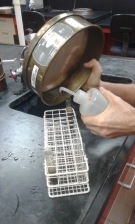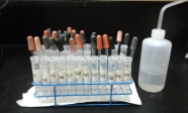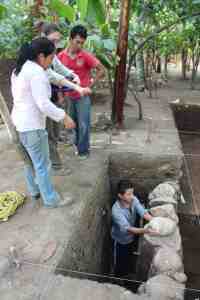Phytoliths are microscopic plant remains that can be recovered from archaeological contexts or lake cores to reconstruct past environments and the diets of ancient peoples. In archaeology, samples can be taken from ancient tools or soils from archaeological contexts. Soil samples recovered from stratigraphy excavated during the Izapa Household Archaeology Project were processed to see how plant use and ambient vegetation at Izapa changed through time. I used the specialized facilities at Smithsonian Tropical Research Institute (STRI) to process them during my 2017-2018 postdoctoral fellowship. I am grateful for the guidance of Irene Holst and Dolores Piperno throughout the process.
Processing phytolith samples involves several steps before they can be analyzed. This includes removing clay from the samples, using mesh screens of different sizes to separate different “fractions” of material (fine, medium, coarse), cooking the samples in Hydrochloric acid to eliminate organic materials, and isolating the phytoliths through flotation. Depending on the samples, it can take several weeks to complete this process. Once they are processed, sample slides are analyzed under the microscope, where the size, shape, and other identifying features are used to identify remains of plants at the family, and sometimes even species, level.
















You must be logged in to post a comment.